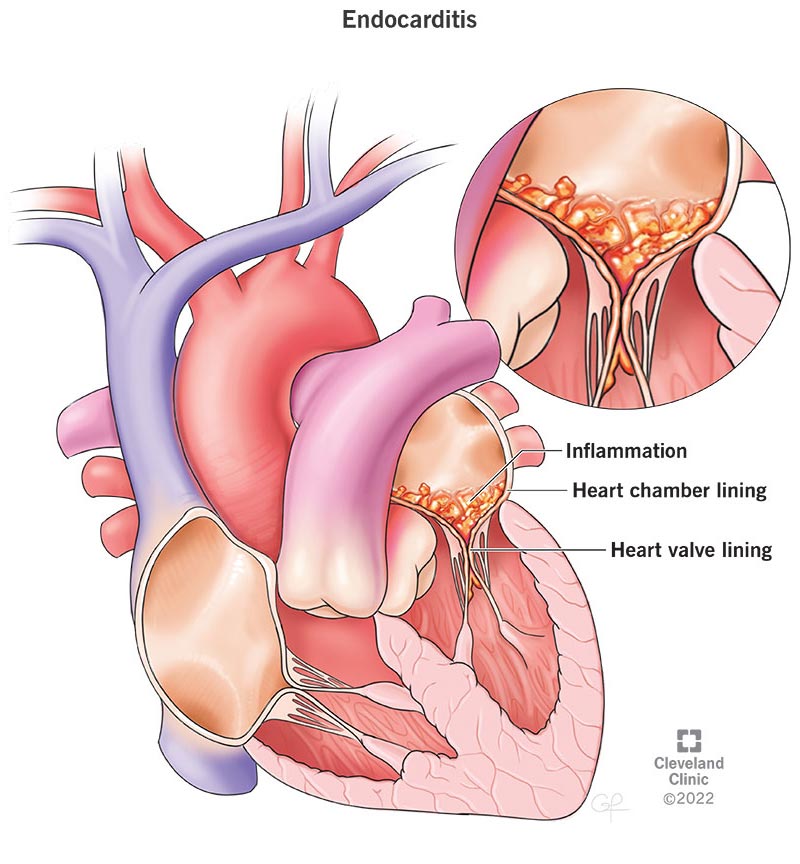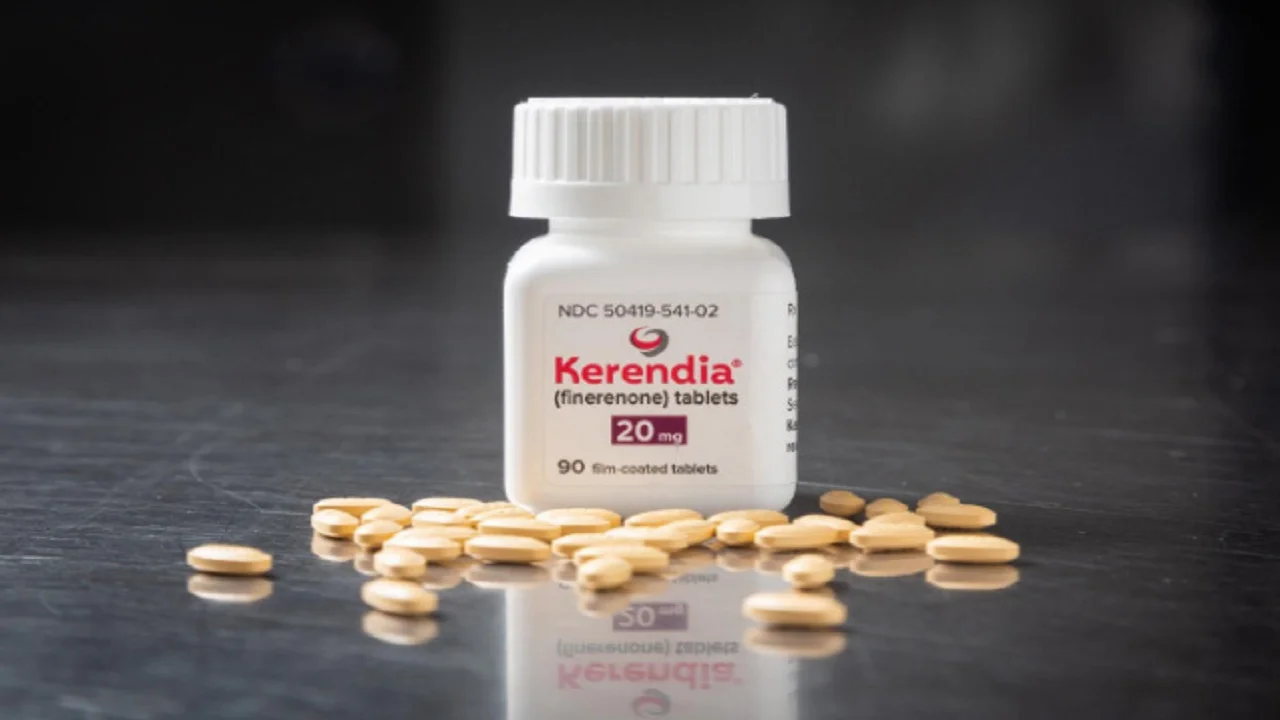
2023 ESC Guidelines for Management of Endocarditis: Key Points
The following are key points to remember from the 2023 European Society of Cardiology (ESC) guidelines for the management of endocarditis:
- 1. Prevention
- Populations at high risk of infective endocarditis (IE) include patients with previous IE; patients with a surgically implanted valve, transcatheter valve, or prior valve repair; patients with uncorrected cyanotic congenital heart disease (CHD) or those with CHD and prior repair involving prosthetic material; and patients with a ventricular assist device.
- Prevention should include general hygienic measures including oral hygiene for patients at intermediate or high risk of IE.
- Antibiotic prophylaxis is recommended in patients at high risk of IE undergoing an oral-dental procedure.
- Antibiotic prophylaxis should be considered in patients with prior transcatheter mitral or tricuspid valve repair, and may be considered in heart transplant recipients and among high-risk patients undergoing invasive respiratory, gastrointestinal, genitourinary tract, skin, or musculoskeletal procedures.
- Antibiotic prophylaxis before dental procedures is not warranted to prevent cardiac implanted electronic device (CIED)-associated IE.
- The endocarditis team
- The Endocarditis Team includes at least cardiologists, imaging experts, cardiovascular surgeons, infectious disease specialists, a microbiologist, and a specialist in outpatient paternal antibiotic treatment.
- Patients with uncomplicated IE can be managed in a referring center with early and regular communication with a Heart Valve Center Endocarditis Team.
- Patients with complicated IE should be treated in a Heart Valve Center that has an Endocarditis Team and facilities for immediate surgery.
- Diagnosis
- The diagnosis of IE is based on a combination of major and minor criteria and utilizes the presence of predisposing conditions; fever; blood cultures; evidence of embolic vascular dissemination and immunological phenomena; and imaging for valvular and paravalvular/periprosthetic anatomic or metabolic lesions using transthoracic (TTE) and transesophageal echocardiography (TEE), cardiac computed tomography angiography (CTA), 18F-FDG positron emission tomography (PET), and white blood cell (WBC) single photon emission tomography (SPECT) CT.
- TTE is recommended as the first-line imaging modality in suspected IE.
- TEE is recommended in patients with suspected IE but negative TTE, in patients with a prosthetic valve, and before switching from intravenous to oral antibiotics.
- Repeat TTE or TEE is recommended within 5-7 days if clinical suspicion for IE remains high and the initial exam was negative or inconclusive, and as soon as a new complication of IE is suspected.
- Cardiac CTA is recommended in patients with possible native valve IE (NVE) or prosthetic valve IE (PVE) to help confirm a diagnosis and to detect paravalvular or periprosthetic complications if echocardiography is inconclusive.
- 18F-FDG PET/CT is recommended in patients with possible PVE and may be considered in patients with possible CIED-related IE.
- WBC SPECT/CT should be considered in patients with suspected PVE when echocardiography is negative or inconclusive and 18F-FDG PET/CT is unavailable.
- Brain and whole-body imaging (CT, 18F-FDG PET/CT, and/or magnetic resonance imaging) is recommended in symptomatic patients with NVE or PVE to detect peripheral lesions, and may be considered for screening for peripheral lesions in asymptomatic patients.
- The guidelines include algorithms for the diagnosis of NVE, PVE, and CIED-associated IE.
- Antimicrobial therapy: principles and methods
- The duration of antibiotic treatment of PVE (≥6 weeks) should be longer than for NVE (2-6 weeks).
- The first phase of antibiotic treatment consists of 2 weeks of in-hospital parenteral treatment; during which surgery should be performed if indicated, infected foreign bodies should be removed, and cardiac and extracardiac abscesses should be drained. In selected patients, a second phase of antibiotic treatment consists of outpatient oral or parenteral antibiotics for up to 6 weeks.
- As above, oral parenteral antibiotic therapy should start only after TEE documents the absence of local progression and complications (including severe valve dysfunction).
- Specific recommendations for antibiotic therapy are made, including:
- Aminoglycosides are not recommended in staphylococcus NVE.
- Rifampin should be used only in IE involving foreign material (including PVE).
- If used, daptomycin should be administered at high doses (10 mg/kg once daily).
- Indications for surgery
- The general indications for surgery in the setting of acute IE are heart failure (HF), uncontrolled infection, and prevention of septic emboli.
- Emergency surgery (within 24 hours) is recommended when aortic or mitral NVE or PVE causes regurgitation, obstruction, or fistula resulting in refractory pulmonary edema or cardiogenic shock.
- Urgent surgery (after 3-5 days) is recommended:
- In aortic or mitral NVE or PVE resulting in HF.
- With evidence of locally uncontrolled infection (abscess, false aneurysm, fistula, enlarging vegetation, prosthetic device, new atrioventricular block).
- With persistent vegetation ≥10 mm after ≥1 embolic episode or vegetation ≥10 mm and other indications for surgery.
- Urgent or non-urgent surgery (depending on patient hemodynamics) is recommended for fungal IE or IE caused by a multi-resistant organism.
- Surgery is recommended for early PVE (PVE within 6 months of valve surgery) with complete debridement and valve replacement.
- Complete system extraction without delay is recommended in patients with definite CIED-related IE during initial empiric antibiotic therapy.
- Surgery for right-sided IE is recommended in patients receiving appropriate antibiotic therapy who have acute severe tricuspid regurgitation resulting in right ventricular dysfunction, recurrent pulmonary emboli requiring ventilatory support or with large (>20 mm) residual tricuspid vegetations, or involvement of left-sided structures. When possible, tricuspid valve repair rather than replacement should be considered.
- Other complications of IE
- Other complications of IE include neurological, infective (mycotic) aneurysms, splenic complications (infarction, abscess), myocarditis and pericarditis, conduction disturbances, musculoskeletal manifestations, and acute renal failure.
- Immediate epicardial pacemaker implantation should be considered in patients with valvular IE undergoing surgery who have complete atrioventricular block (AVB) and one predictor of persistent AVB (preoperative conduction abnormality, S. aureus infection, aortic root abscess, tricuspid valve involvement, or previous valve surgery).
- Surgical therapy: principles and methods
- Preoperative coronary angiography (in the absence of an aortic valve vegetation) or coronary CTA (in patients with an aortic valve vegetation) typically are recommended for men >40 years, post-menopausal women, or others with a history of coronary artery disease or ≥1 cardiac risk factor.
- Surgery should not be delayed in patients after transient ischemic attack; or after documented non-hemorrhagic stroke in the setting of HF, uncontrolled infection, abscess, or persistent high embolic risk.
- In patients with significant preoperative hemorrhagic stroke, a delay (≥4 weeks) in surgery should be considered. In patients with hemorrhagic stroke and unstable clinical status (HF, uncontrolled infection, high embolic risk), urgent or emergent surgery should be considered weighing the likelihood of a meaningful neurological outcome.
- Outcome after discharge
- In contrast to re-infection (IE caused by a different organism usually >6 months after the initial episode of IE), relapse (IE caused by the same organism) requires a search for a persistent infective focus and evaluation for possible surgical intervention.
- Blood cultures should be performed after the completion of antibiotic treatment.
- After completion of treatment for IE, patients should remain under close surveillance for long-term complications.
- Patient education is recommended for the risk of IE recurrence and for preventative measures with emphasis on dental health.
- Addiction treatment is recommended following IE in people who inject drugs.
- Patient-centered care
- A recovery plan should be developed in collaboration with the patient in the setting of absent support networks or adverse social factors, highlighting information about future preventative measures and the risk of IE recurrence.
https://academic.oup.com/eurheartj/advance-article/doi/10.1093/eurheartj/ehad193/7243107
2023 ESC Guidelines for Management of Endocarditis: Key Pointscardiaccardiocardio BloggerCardiomyopathieschest painciedCIED InfectiondiseasesDiuretic Therapy for Patients With Heart FailureECGEmbolic StrokeEndocarditisESC Guidelines for Management of CardiomyopathiesESC Guidelines for Management of EndocarditisESC Guidelines for Management of Endocarditis 2023Guidelines for Management of Endocarditisheartheart diseaseManagement of Endocarditis







